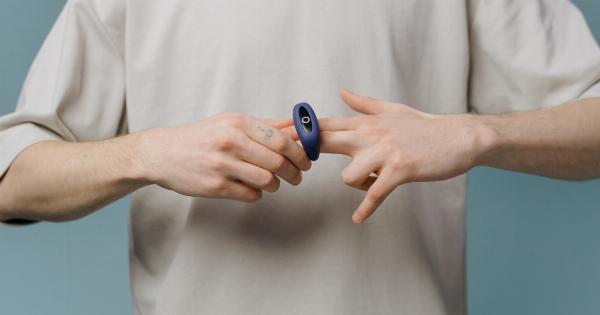Heart rate is an essential factor in determining the overall health and fitness of individuals. It not only indicates the intensity of exercise or physical activity but also provides insight into a person’s cardiovascular endurance.
Monitoring heart rate during exercise is crucial to ensure that individuals are pushing themselves adequately or not exceeding their limits. Age-based heart rate guidelines help individuals understand what their target heart rate should be during various activities based on their age.
This article will provide a detailed chart highlighting age-based heart rate guidelines for different age groups.
Understanding Heart Rate
Heart rate refers to the number of times the heart beats per minute (BPM). It varies depending on factors such as age, fitness level, and activity level.
Measuring heart rate is relatively easy and can be done by placing fingers on certain pulse points, such as the wrist, neck, or chest. The most common way to measure heart rate is by using a heart rate monitor.
Importance of Heart Rate during Exercise
Heart rate is a valuable tool for individuals engaging in exercise or physical activity. It helps to gauge the intensity of the workout and sets a benchmark to improve cardiovascular fitness. Different heart rate zones indicate specific workout goals:.
- Low-intensity zone: Also known as the warm-up or recovery zone, this zone represents 50-60% of the maximum heart rate. It is ideal for beginners, individuals recovering from injuries, or those looking to improve basic cardiovascular fitness.
- Moderate-intensity zone: This zone ranges from 60-70% of the maximum heart rate. It is suitable for individuals seeking to improve endurance and burn calories efficiently.
- High-intensity zone: Falling between 70-85% of the maximum heart rate, this zone is for individuals looking to enhance aerobic capacity and overall performance.
- Maximum-intensity zone: This zone represents 85-100% of the maximum heart rate and is for experienced athletes or individuals engaging in high-intensity interval training (HIIT).
Age-Based Heart Rate Guidelines Chart
| Age Group | Maximum Heart Rate | Low-Intensity Zone | Moderate-Intensity Zone | High-Intensity Zone | Maximum-Intensity Zone |
|---|---|---|---|---|---|
| 20-29 years | 190 bpm | 95-114 bpm | 114-133 bpm | 133-161 bpm | 161-190 bpm |
| 30-39 years | 185 bpm | 93-111 bpm | 111-130 bpm | 130-157 bpm | 157-185 bpm |
| 40-49 years | 180 bpm | 90-108 bpm | 108-126 bpm | 126-153 bpm | 153-180 bpm |
| 50-59 years | 175 bpm | 88-105 bpm | 105-122 bpm | 122-148 bpm | 148-175 bpm |
| 60-69 years | 170 bpm | 85-102 bpm | 102-119 bpm | 119-144 bpm | 144-170 bpm |
| 70+ years | 165 bpm | 83-99 bpm | 99-115 bpm | 115-140 bpm | 140-165 bpm |
The Importance of Age-Based Heart Rate Guidelines
The age-based heart rate guidelines provide a reference point for individuals to gauge their heart rate during various activities.
It allows individuals to stay within safe and effective heart rate zones to maximize the benefits of exercise or physical activity. The guidelines take into account the natural changes in the cardiovascular system that occur with age, ensuring that individuals can maintain a healthy and appropriate heart rate during exercise.
Factors Affecting Heart Rate
While age is a significant factor in determining heart rate guidelines, other factors can influence heart rate as well. These include:.
- Fitness Level: Individuals who have a higher fitness level might have a lower resting heart rate and can achieve higher heart rates during exercise.
- Medications: Certain medications, such as beta blockers, can lower heart rate.
- Temperature: Heat and humidity can increase heart rate, as the body works harder to dissipate heat and maintain a stable core temperature.
- Stress and Emotions: Stress, anxiety, and intense emotions can elevate heart rate.
- Body Size and Composition: Larger individuals may have a higher resting heart rate compared to smaller individuals.
Tips for Monitoring Heart Rate
It is essential to monitor heart rate accurately to ensure proper exercise intensity. Here are some tips for monitoring heart rate effectively:.
- Use a heart rate monitor or fitness tracker that accurately measures heart rate.
- Find your pulse by placing your fingers on your wrist, neck, or chest. Count the beats for 15 seconds and multiply by four to get the BPM.
- Check heart rate at rest, during exercise, and during recovery periods to understand your body’s response to different activities.
- Experiment with different types of exercise and monitor heart rate to determine the activities that best elevate your heart rate within the desired zones.
- Consult with a healthcare professional if you have any underlying medical conditions or concerns about your heart rate.
Conclusion
Heart rate guidelines based on age provide individuals with a foundation to understand and monitor their heart rate during exercise or physical activity.
By following these guidelines, individuals can ensure that they are exercising at an appropriate intensity level to achieve their fitness goals safely. However, it’s important to remember that heart rate can vary due to individual factors, so it’s always advisable to listen to your body and consult with a healthcare professional if needed.


























